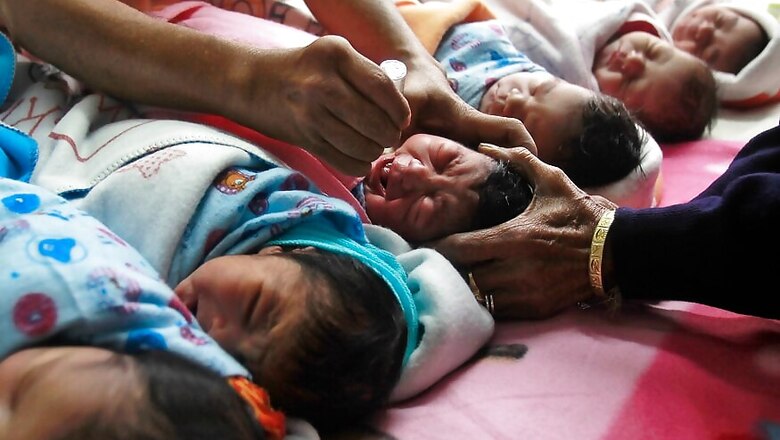
views
While the country is gaining ground in providing better healthcare for its children, year on year, in some states like Madhya Pradesh, mortality rates of children is actually growing, according to the latest data released in the Sample Registration System (SRS) survey for the year 2018.
Take the case of Infant Mortality Rate (IMR), for instance, the number of infant deaths (less than one year) per thousand live births. If one compares overall figures for India to the data of previous years, India’s IMR showed a gradual improvement from 34 in 2016 to 33 in 2017 to 32 in 2018. Another encouraging trend in the data is that the disparity between female and male mortality rates among children is slowing closing in.
Over the decade between 2006-08 AND 2016-18, India’s IMR improved by 40.3 per cent, the SRS survey showed.
The male and female IMR in 2016 were 33 and 36, in 2017 the gap closed with male and female IMR improving to 32 and 34, and in 2018 it was 32 and 33. The push seems to have come from rural areas which saw sharper improvement in mortality rates of infants, especially those of female infants.
Male and female IMRs in rural India in 2016 were 37 and 40, in 2017 36 and 37, and a parity was reached in 2018 data where both male and female infants had the same mortality rate of 36.
Kerala was the only state to register single digit figures for three – male IMR, female IMR and the overall IMR – parameters. And among the few states where female IMR was actually much lower than male IMR. Improving from 2017 when it had 9 male IMR and 10 female IMR, it stood at the top of the table in 2018 with 9 male IMR and 5 female IMR. Its overall IMR in 2018 was 7.
Delhi had the second-best indicators. Its overall IMR was 13. Male IMR was 14 and female IMR 12. Delhi also saw the biggest reduction, of 56.5 per cent, in IMR in the country over the decade between 2006-08 and 2016-18. Delhi and Tamil Nadu’s IMRs in 2016 was the same – 16.
However, Delhi seems to have done a much better job than the southern state, which fares third nationally with IMR of 15, in improving healthcare for its children.
Coming to the states that haven’t done well in their job of providing better healthcare for their children, Madhya Pradesh consistently comes out as the worst in the nation.
In 2017 its IMR was 47, the male IMR was 48 and female IMR 45. In 2018 it’s actually done worse with its IMR increasing to 48, given the increase in IMRs for both males, 51, and females, 46. Uttar Pradesh finds itself second, worsening its IMR from 41 in 2017 to 43 in 2018. Jharkhand is another state whose IMR has worsened from 29 in 2017 to 30 in 2018. Then there are states like Haryana, with IMR of 30, and Maharashtra with IMR of 19, which have shown no improvement in this parameter over the previous year.
In the under-5-year mortality rate also, MP tops the table with 56 IMR, which is worse than what was registered in the state in 2017, 55. In the case also of neonatal deaths, i.e., deaths of infants younger than 29 days, MP seems to have slipped further down from what it registered in 2017, 33 deaths for every 1000 babies younger than 29 days, when it came at the bottom of the table, to 35 deaths per 1000 babies younger than 29 days in 2018.




















Comments
0 comment